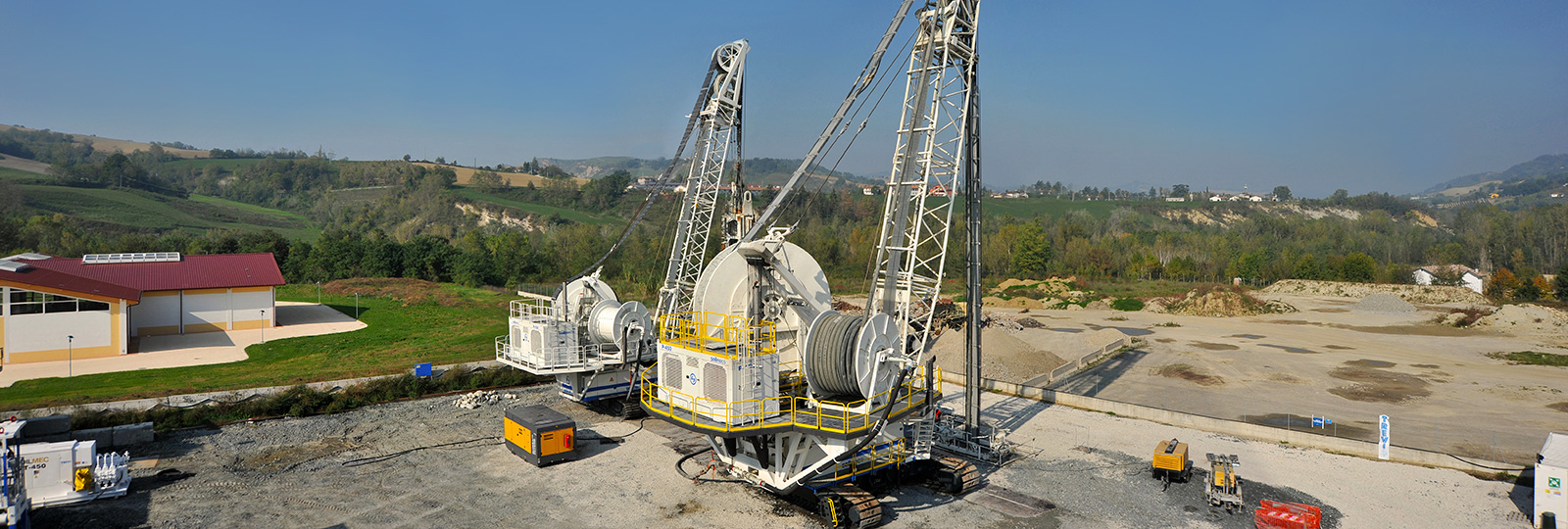Gualdo: diaphragm walls up to a depth of 250 meters thanks to the collaboration between Trevi and Soilmec
In November 2012, in view of the tender for the Mosul dam works, the Trevi Group wrote an important chapter in underground engineering by redefining the parameters for the construction of diaphragm walls at great depth .
Thanks to the collaboration between Trevi and Soilmec, the Group acquired the ability to carry out diaphragm walls up to a depth of 250 meters, with a innovative Tiger hydromill in the Gualdo construction site (a few kilometers from Cesena), a site that offered real operating conditions, being characterized by varied and significant geology: a milestone never reached before.
In particular, the new technology developed by Trevi Group enables designers to tackle and solve complex geotechnical problems involving hydraulic infrastructures (but not limited to) where the construction of deep waterproofing diaphragm walls is required.
The 250 m depth exceeds by over 100 m the maximum limit ever reached for diaphragm walls of this type and it was achieved thanks to the development of a new Tiger design. The rig derives from the Soilmec SC-200 crane, whose structure was modified to house the control unit along with the large-size coilers required to contain the suction pipe for the excavated material and the hydraulic feeding pipes for the hydromill module.
The hydromill was also modified to withstand the enormous pressures (ca. 30 bars) it would have undergone once having reached the excavation bottom. In order to ensure the functionality and reliability of the module, the designers adopted innovative solutions capable of securing the seal of the fittings and the suitable protection of the electrical components and sensors, whose main purpose is to send data to the DMS system. Indeed, the DMS system greatly contributed to ensuring the success of the tests, since it allowed the real-time monitoring of the main excavation parameters and, therefore, the verticality control.
The Gualdo site also featured a new Soilmec bentonite slurry treatment system, called SMT-500, later used in various construction sites, such as Copenhagen, Buenos Aires, Istanbul, Paris. During the experiment, the system showed off its strengths, in particular its ability to unload directly onto the truck the solid debris headed to the recycling plant and its capacity to eliminate the finest components in the mix such as silt, which are usually difficult to separate.
These important tests are the outcome and the proof of the great synergy existing between the divisions of the Trevi Group. This experience paved the way for developing and testing a new technology that was then offered to an ever-increasing international market and used in significant projects such as:
Guangzhou Metro (China)
Salipazari Project (Istanbul, Turkey)
Grand Paris Express (France)
Frankfurt 4 (Germany)
 English
English  Italiano
Italiano 
